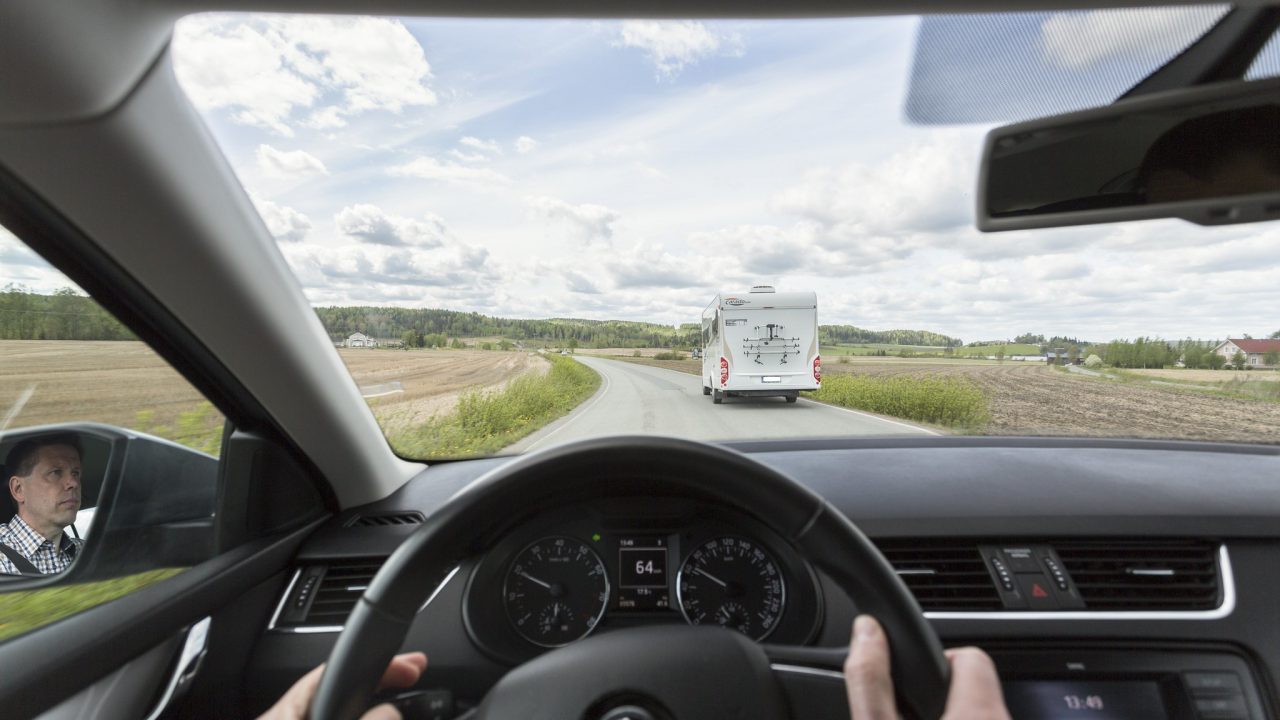
Overtaking
Overtake only when it is safe and legal to do so. The overtaking driver is always responsible for safety during overtaking. Overtaking even a much slower driver requires a surprising amount of space. Overtaking does not give licence to ignore the rules or drive over the speed limit.
Is overtaking absolutely necessary?
You should overtake only when it is necessary and safe to do so. Think carefully before you overtake. The time gained from an overtaking is often minimal. This makes many overtakes unnecessary in relation to the risks. Especially on two-lane roads, overtaking often means having to drive on the side of oncoming traffic. Overtaking can also affect the flow of traffic.
Drivers who constantly feel the need to overtake should check their speed.
According to the law, a lane change and other lateral movement is permitted only when it does not endanger other road users. Safe passing distance is also vital especially when passing pedestrians, cyclists, mopeds, motorcyclists and horse riders.
The speed of oncoming traffic is difficult to estimate. When overtaking, make sure that you have a clear gap in the road ahead. If you start overtaking and realise it is a mistake, you should be able to accept it and get back in your lane.
Overtaking does not give licence to break the rules or drive even momentarily over the speed limit.
How to overtake safely:
- Consider if overtaking is necessary. Overtake only when it is safe and legal to do so.
- Before overtaking, check your mirrors and blind spots. Make sure that the road ahead is clear, with enough distance for you to safely overtake. Overtaking even a much slower driver requires a surprising amount of space.
- Do not get too close to the vehicle you intend to overtake.
- Use your indicator when you are about to start overtaking and when returning to your lane. Keep a smooth trajectory when changing lanes.
- Whilst overtaking, stay within the speed limit.
- Maintain a safe distance from the vehicle you are overtaking. You should not return to your lane until you can see the front of the overtaken vehicle in the rear-view mirror.
- Overtake on the left., usually also on motorways.
Overtaking a cyclist
Overtake a cyclist only when it is safe to do so. Overtake only:
- if the view is clear,
- there is no oncoming traffic,
- you are not in a “no overtaking” zone and
- there is no risk of endangerment.
Maintain a sufficient distance from the cyclist before, during and after overtaking. A safe passing distance is crucial as the backdraft of the overtaking car can cause a bicycle to wobble. Extra caution is needed if the car tows a trailer etc. The most straightforward way is to overtake by moving entirely into the opposite lane. If overtaking cannot be done safely, remain behind the cyclist at a safe distance until there is a more suitable section of the road to overtake.
On roads, cyclists should ride on the hard shoulder or as close to the right-hand edge of the road as is safe. Often there is no hard shoulder, or it is in too poor condition for cyclists. In these cases, the cyclist rides on the right-hand edge of the lane.
Joining a motorway
A vehicle joining a motorway must give priority to traffic already on the motorway. The purpose of the acceleration lane is to facilitate safe merging: the vehicle speed is adjusted to the traffic flow to enable a safe and smooth transition.
As a general rule, overtaking should take place from the left. The same overtaking rules apply to motorways as other roads. It is important to maintain safe distances before, during and after overtaking. On motorways, safe distances are made easier by the fact that there is usually no need to get quickly back in the right-hand lane. When the front of the overtaken vehicle is visible in the rear-view mirror, it is safe to return to the right-hand lane. A safe distance during the lane change ensures that the rear vehicle does not need to slow down, which avoids setting off a chain reaction down the line.
On the motorway, the right-hand lane can sometimes have better flow, which can lead to “undertaking”. If a vehicle passes another vehicle without changing lanes, it is not overtaking per se.
Overtaking on an extra-wide highway
In Finland, there are some road sections with extra-wide lanes. Instead of the typical roughly four-metre width, these lanes can be over five metres wide in places. The lane can fit two vehicles if they are positioned correctly. The normal rules of right-hand side traffic apply: the vehicle should drive as close to the right-hand edge of the lane as is safe.
In this way, a vehicle approaching from behind can overtake without having to move onto the side of oncoming traffic. Even on extra-wide highways, you should only overtake if it can be done safely. If there is no oncoming traffic, the vehicle can cross the centre line in the same way as on regular highways. However, there are also “no overtaking” zones on extra-wide highways.
Overtaking a vehicle turning left at an intersection
If the vehicle in front of you is turning or clearly about to turn left, it can be overtaken only from the right and provided there is enough space.